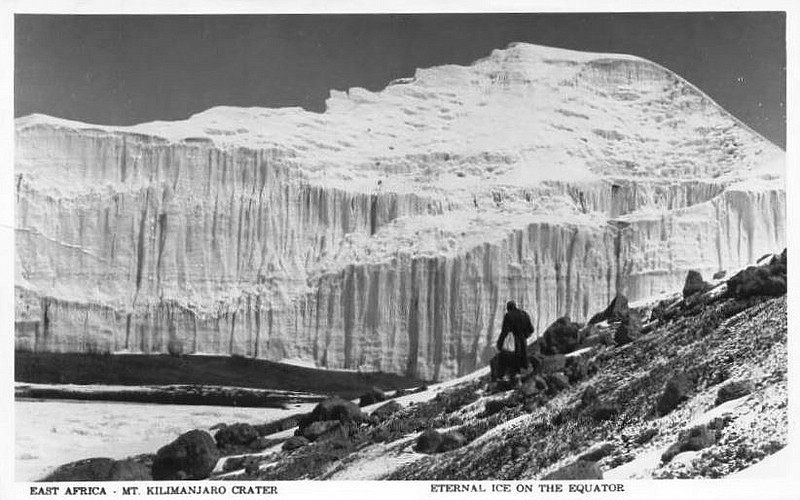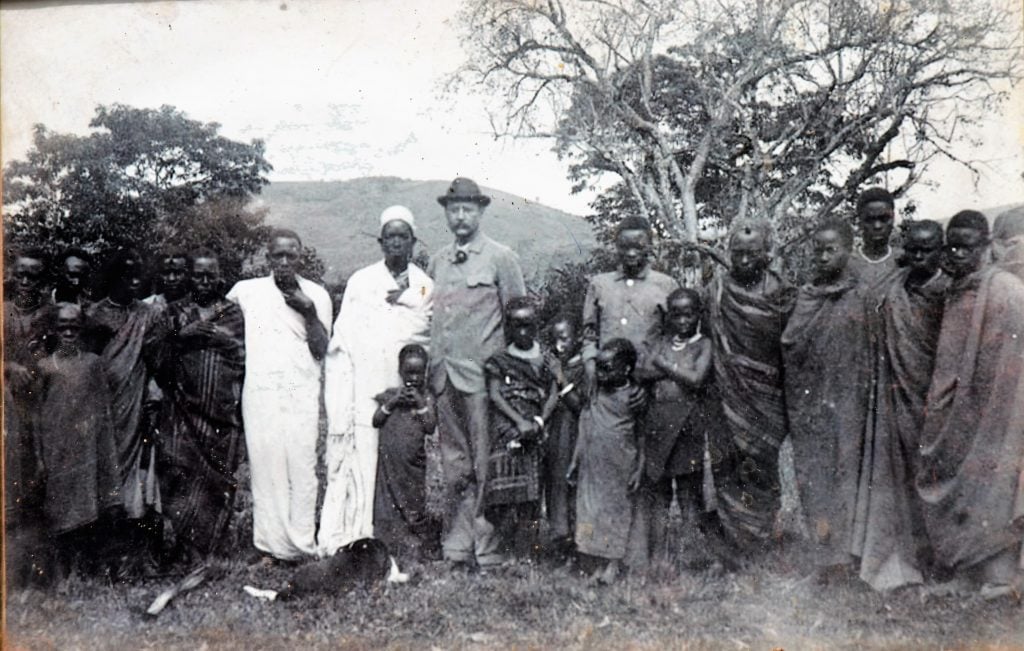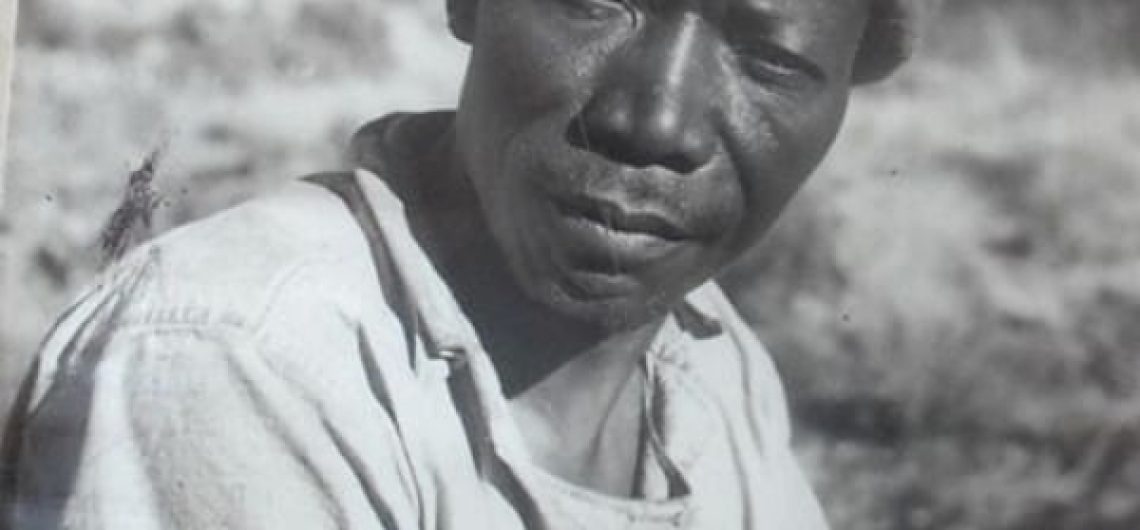The first Tanzanian person to reach the peak of Mount Kilimanjaro was Johannes Kinyala Lauwo on the 5th of October, 1889. Born in the then Tanganyika, now Tanzania, he was a Marangu army scout, who made nine attempts before stumbling on a crater in the company of Hans Meyer, making them the first persons to climb Kilimanjaro. This makes Mzee Lauwo not only the first Tanzanian man to reach the summit of Kilimanjaro but also the first African man to do so. For the first ascent by non-indigenous climbers, led by Hans Meyer, who in turn became the first European and white man to climb Kilimanjaro to the summit Lauwo acted as a mountain guide on their expedition to the summit. This peak was named Kaiser-Wilhelm-Spitze or Kaiser Wilhelm Peak before being renamed Uhuru Peak after Tanzania gained independence. Born in 1871 and died in 1996, Mzee Lauwo was a Tanzanian, born and raised around the Kilimanjaro region and he came from the larger Chaggah tribe that inhabits the Kilimanjaro region. He was named Yohani Kinyala Lauwo, and Yohani is the Swahili form of the name Johannes or John.
In 1889, he served as the tour guide for Hans Meyer and Ludwig Purtscheller, and Meyer gave his name to the nearby Johannes’ Notch. To mark the climb’s 100th anniversary, the West German government constructed Kinyala a residence in 1989.

He claimed to have led Hans Meyer up Kilimanjaro several times previously. He said that before realizing there was an interior crater, he had ascended nine times. On the mountain, he also came across the leopard’s corpse.
What images come to mind when the name “Mt. Kilimanjaro” is mentioned? The phrase undoubtedly evokes romantic notions of personal development, difficulty, failure, and triumph. We have viewed images and heard tales.
The only things driving the first group of climbers up Mount Kilimanjaro in 1889 were their courage, desire, and naivete. The most frequent response to the question “Who was the first to climb Mount Kilimanjaro?” is Hans Meyer of Germany. The expedition’s inspiration is attributed to Hans Meyer, but who served as his mentor?
 On October 5, 1889, Yohani Kinyala Lauwo, then just 18 years old, guided Hans Meyer and Ludwig Purtscheller to the highest peak in Africa. It was by mistake that the Mangi (Chagga leader) chose him to be Hans Meyer’s guide, but it irrevocably altered his life. He was known as Kinyala, and he spent his whole life in the Marangu settlement, which is tucked away atop Mount Kilimanjaro.
On October 5, 1889, Yohani Kinyala Lauwo, then just 18 years old, guided Hans Meyer and Ludwig Purtscheller to the highest peak in Africa. It was by mistake that the Mangi (Chagga leader) chose him to be Hans Meyer’s guide, but it irrevocably altered his life. He was known as Kinyala, and he spent his whole life in the Marangu settlement, which is tucked away atop Mount Kilimanjaro.
Related: A team of all-black, African-American women climbed Mount Kilimanjaro
Many members of the Lauwo clan of the Chagga tribe hunted forest elephants for their ivory before European explorers arrived in East Africa and sold it to Swahili traders on the shore.
Additionally, the forest provided people with honey, lumber, medicine, and skins from Colobus monkeys. Kinyala Lauwo was a tall teen who was intimately familiar with the jungle when Hans Meyer first came in Chaggaland. In Kinyala’s native region by that time, colonization had already begun, and young men were being coerced into building roads. Kinyala attempted to avoid the “draft,” but she got snagged. He was thus called to appear in court in Mangi Marealle’s palace. Hans Meyer, who was coincidentally seeking authorization to climb the mountain as well as guides and porters, had just arrived at the palace.
See: The first woman to summit Mount Kilimanjaro.
Before European explorers arrived in East Africa, the Lauwo clan of the Chagga tribe relied on hunting forest elephants for ivory, which they sold to Swahili traders. In addition to ivory, the forest provided them with resources such as honey, timber, medicinal plants, and Colobus monkey hides. By the time Hans Meyer reached Chaggaland, Kinyala Lauwo was a knowledgeable teenager who was intimately familiar with the forest. The arrival of colonialism brought challenges to Kinyala’s homeland, with young men like him being forced into road construction. Despite attempting to evade this obligation, Kinyala was eventually caught and summoned for trial at Mangi Marealle’s palace. Coincidentally, Hans Meyer arrived at the palace seeking permission to climb the mountain and required guides and porters for his expedition. Recognizing Kinyala as a member of the Lauwo clan, the Mangi’s advisors asked him to lead the climb. This pivotal moment marked the beginning of Kinyala’s long and illustrious career as a guide for Mount Kilimanjaro climbs, spanning over seventy years. Despite starting his first climb with only blankets for protection, over time he acquired the necessary clothing and gear. Later in life, when Mzee Lauwo turned one hundred years old, he was gifted a beautiful, modern home painted in light purple and pink by the Tanzania National Parks. He lived in this house with his two wives until his passing on May 10th, 1996, at the remarkable age of one hundred and twenty-five.
Mzee Laowo was discovered by the Mangi’s Wachili (advisers), who recognized him as a member of the Lauwo tribe and invited him to lead the expedition.
The incident inspired Kinyala (later known as Mzee Lauwo) to lead hikes up Mount Kilimanjaro for more than 70 years! He had no other protection for his initial ascent except blankets. He accumulated proper apparel and trekking equipment throughout the years. The Tanzania National Parks Authority presented Mzee Lauwo with a stunning, contemporary home that was pastel-colored light purple and pink when he turned 100. After a long life of 125 years, he passed away here on May 10th, 1996, with his two wives by his side.
The first mountain guide on Kilimanjaro
Mzee Lauwo transitioned to becoming a Kilimanjaro guide after his groundbreaking trek, leading others up safer paths. Today, Yohana’s grandson, Pendaeli, continues this family legacy by guiding trekkers to Uhuru Peak. Despite his grandfather’s birth year of 1871, one might wonder how Pendaeli is still guiding climbers. Yohana, remarkably, lived up to the age of 125, leaving behind many offspring before his passing in 1996.
At the age of 70, Yohana Lawuo successfully led his final journey up the Mountain. This occurred exactly one century after the initial ascent of Mountain Kilimanjaro in 1889. Yohana Kinyala Lawuo held the distinction of being the sole individual present during the first ascent who had also witnessed it firsthand. The climbing routes were undefined and the equipment rudimentary at best, while wages remained extremely low. Yohana Lawuo, our grandfather, earned a mere one Tanzania Shilling per day for a seven-day trek. After this triumphant climb, he decided to remain in Marangu. Yohana dedicated his time to guiding foreign trekkers up the mountain and training new guides.
Starting as a porter and progressing to an assistant guide for five years, Pendaeli, also known as “Penda” to his clients, now holds the esteemed position of head guide. With a familial history of summiting Uhuru Peak and years of experience, he has proven to be highly skilled in guiding trekkers to the mountain’s summit.
Lauwo Family Tree
The Lawuo families originated from Ukambani and travelled across the Kenya-Tanzania border to Horombo. Some remained in Horombo and became known as the “Mramba clan”, while others continued their journey in search of a suitable settlement at Marangu Ashira (Rengonyi). After arriving at this location, they established a permanent settlement, forming the Lawuo clan. Prior to the arrival of Europeans in Tanganyika (nowadays Tanzania), the Lawuo clan engaged in various activities such as hunting elephants, and colobus monkeys, and collecting honey and timber from the forest. The ivory obtained from elephants was sold to Swahili traders from the coast. Additionally, the family gathered honey, timber, and tree roots for medicinal purposes, and utilized the hides of colobus monkeys for traditional dances and decorations.
Generation 1
- Lauwo
Generation 2
- Kimonge
- Aisere
- Brother: Kimemia
Generation 3
- Mramba
- Mwiwere
- Rawia
- Brother: Mkawo
- Kinyala
Kimemia’s Descendants
- Kiwere
- Ndauliso
Rawia’s Descendants
- Mkawo
- Paolo
- Yakobo (Paolo’s child, your wife’s father)
- Many children
Rewards and Legacy
During his lifetime Yohana Lawuo was re-warded some accolades from friends as well as organizations:
1: (O.B.E) Order of the British Empire for saving the life of one climber on the mountain
2: Gift of Book from German Ambassadors, in 1989 (written by Mzee Yohana Lawuo,.. In appreciation of the excellent leadership skills shown when guiding the renowned Professor Hans Meyer to the summit of Mount Kilimanjaro a century ago.).
On this day 6th October 1989 in Moshi,
Uristed Helffler Ambassador.
3: A trophy which was handed over to Yohana Lawuo as climber of Mount Kilimanjaro of the ‘’century” sponsored and presented by Tanzania Breweries ltd, October 1989.
4: A memorable House, In recognition of Yohana Lawuo’s achievement as the first guide to lead a successful climb of Mount Kilimanjaro in 1889, he was given a house by the Tanzania National Parks as a centenary gift in 1992, three years after completing 100 years of age.
![]()


Comments